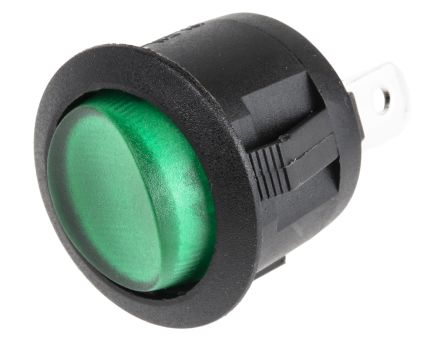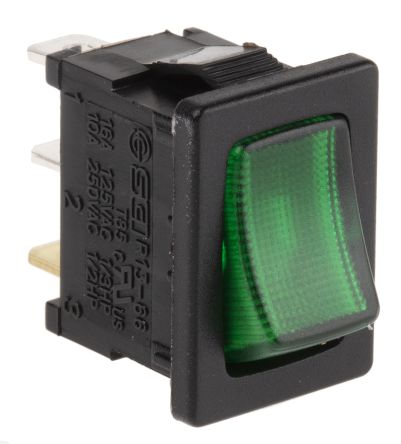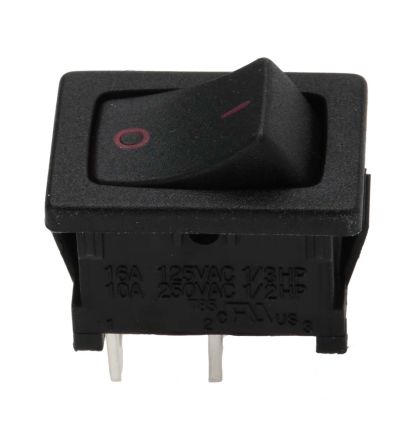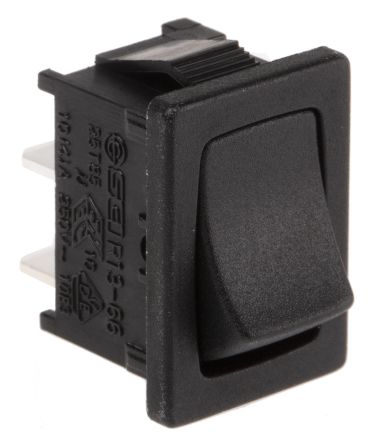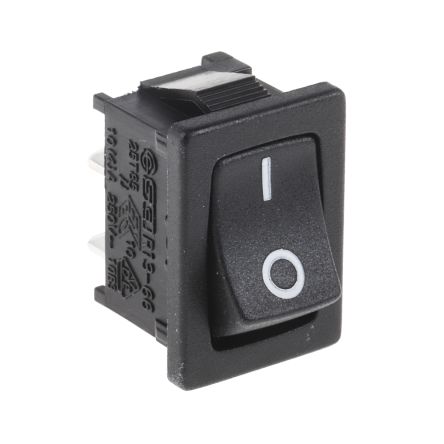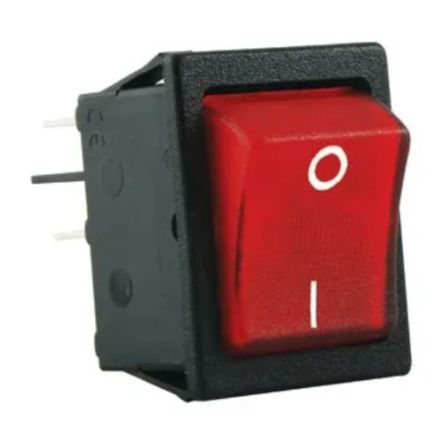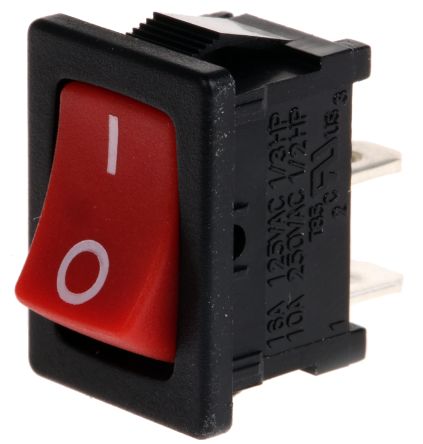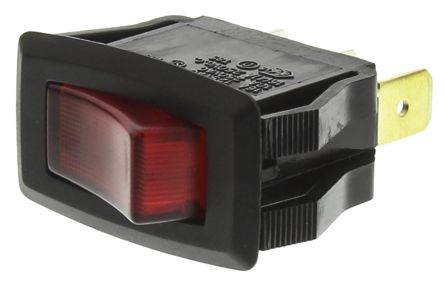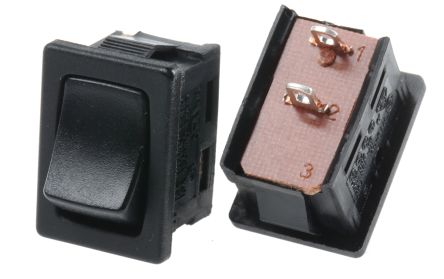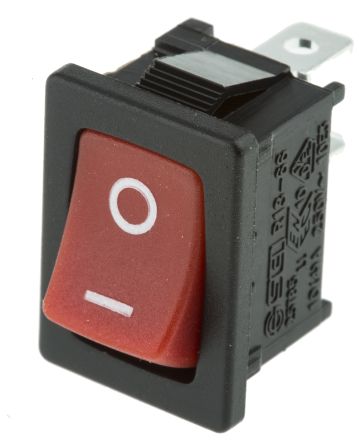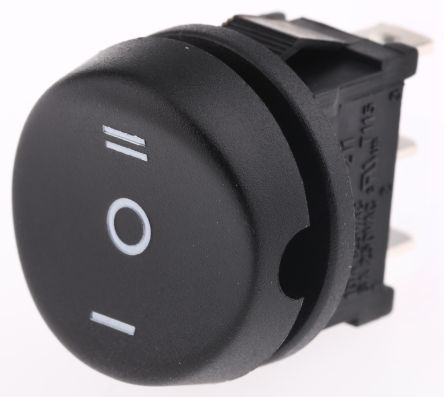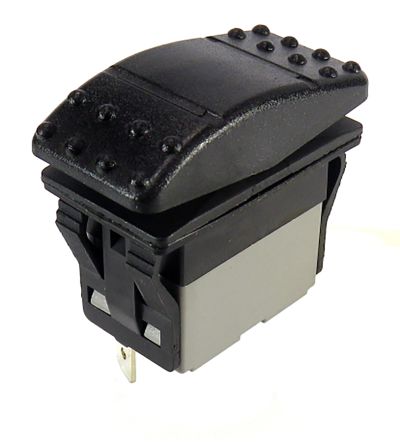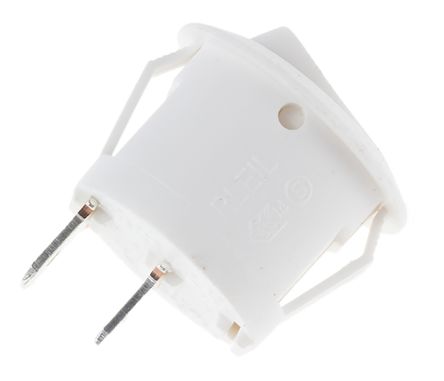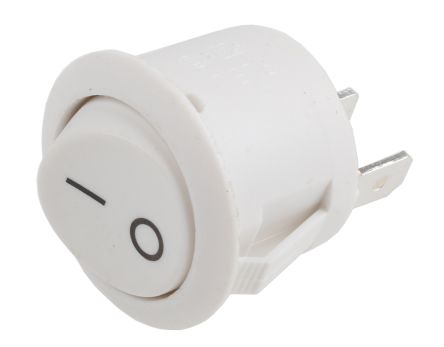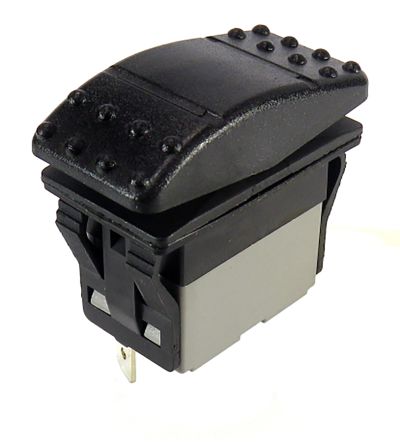- Automation & Control Gear
- Cables & Wires
- Enclosures & Server Racks
- Fuses & Circuit Breakers
- HVAC, Fans & Thermal Management
- Lighting
- Relays & Signal Conditioning
- Switches
- Batteries & Chargers
- Connectors
- Displays & Optoelectronics
- ESD Control, Cleanroom & PCB Prototyping
- Passive Components
- Power Supplies & Transformers
- Raspberry Pi, Arduino, ROCK, STEM Education & Development Tools
- Semiconductors
Rocker Switches
A rocker switch is a type of electrical switch featuring a lever or rocker that can be toggled between two positions: "on" and "off." Commonly referred to as an on off rocker switch, this device is widely used in various applications due to its simple operation and reliability. Rocker switches are available in several configurations, including momentary rocker switches, 3 way rocker switches, 2 pole rocker switches, and illuminated rocker switches. They are also designed to handle different voltages, making them versatile for both residential and industrial use.
How to Use Rocker Switches
Here's some useful information on how to use rocker switches:
Function
Rocker switches are primarily used to control the flow of electric current to devices or circuits. They act as a bridge between the power source and the load (device) you want to control.
On and Off Positions
The rocker switch has two stable positions: "on" and "off", hence the name “on off rocker switch”. In the "off" position, the switch interrupts the electrical circuit, preventing the current from flowing to the load. When you toggle it to the "on" position, the switch closes the circuit, allowing the current to reach the load.
Wiring Terminals
To use a rocker switch, you need to connect the switch terminals to the relevant wires. Typically, a rocker switch has three terminals: a common terminal (also called the "COM"), a normally open terminal ("NO"), and a normally closed terminal ("NC"). The common terminal is where you connect the power source or the live wire. The NO and NC terminals are for connecting the load or to the device you want to control.
**Wiring Configurations **
The wiring configuration will depend on your specific application and the desired behaviour of the switch. For instance:
- If you want the load to be energised when the rocker switch is in the "on" position, you would connect the live wire to the COM terminal and the load wire to the NO terminal.
- If you want the load to be energised when the rocker switch is in the "off" position, you would connect the live wire to the COM terminal and the load wire to the NC terminal.
Installation
Rocker switches are typically mounted onto a panel or a switch box using screws or clips. Make sure to follow the manufacturer's instructions for proper installation.
Types of Rocker Switches
Rocker switches come in various types, each designed to meet specific electrical and mechanical needs. These switches are widely used in different applications, from simple on/off control to more complex multi-position configurations.
SPST (Single Pole, Single Throw) Rocker Switches
SPST rocker switches are the simplest form of rocker switch. They have a single input and a single output, controlling one circuit by toggling between "on" and "off". These are often used in basic on/off applications, such as controlling lights or small appliances.
DPDT (Double Pole, Double Throw) Rocker Switches
DPDT rocker switches feature two inputs and two outputs, allowing them to control two separate circuits simultaneously. These rocker switches are commonly used in applications where you need to reverse the polarity of a circuit, such as in motor control.
Illuminated Rocker Switches
Illuminated rocker switches come with built-in lights, making them easy to locate in dark or low-light environments. The illumination typically indicates the switch’s status, showing whether the circuit is active or inactive. These are popular in automotive and industrial control panels.
Waterproof and Sealed Rocker Switches
Waterproof and sealed rocker switches are designed for use in harsh environments where moisture, dust, or debris could affect the operation of standard switches. These rocker switches are ideal for marine applications, outdoor equipment, or any setting requiring reliable performance in challenging conditions.
Latching Rocker Switches
Latching rocker switches maintain their position after being pressed, staying in the "on" or "off" state until manually toggled again. This makes them suitable for applications where a stable, consistent control is necessary, such as in lighting systems or machinery control.
Momentary Rocker Switches
Momentary rocker switches only stay in their "on" position as long as they are being pressed. Once released, they return to the "off" position. These are typically used in applications requiring temporary activation, like horn buttons or start controls.
Heavy-Duty Rocker Switches
Heavy-duty rocker switches are built to handle higher electrical loads and more demanding applications. These rocker switches are often used in industrial environments where durability and reliability are critical, such as in machinery and equipment control.
Miniature Rocker Switches
Miniature rocker switches are compact versions of standard rocker switches, designed for use in small or confined spaces. Despite their size, they offer the same functionality, making them ideal for electronics, instrumentation, and control panels where space is limited.
Considerations for Choosing a Rocker Switch
When choosing a rocker switch, it's important to consider several key factors to ensure it meets the specific needs of your application.
Voltage and Current Rating: Ensure the rocker switch you select is rated for the voltage and current of your application. For instance, a 240V rocker switch is suitable for higher voltage systems, while a 2 pole rocker switch may be necessary for circuits requiring separate control of two loads.
Durability: Consider the switch's durability, particularly if it will be used in demanding environments. Heavy-duty rocker switches are designed to withstand higher electrical loads and frequent use, making them ideal for industrial applications.
Environmental Conditions: Evaluate the environmental conditions where the switch will be installed. For outdoor or harsh environments, waterproof and sealed rocker switches provide protection against moisture, dust, and other contaminants, ensuring reliable operation.
Switch Configuration: The configuration of the switch is also crucial. Decide whether you need a momentary rocker switch for temporary activation, a 3 way rocker switch for multiple positions, or an illuminated rocker switch for visibility in low-light conditions.
Explore Our Range of Rocker Switches Today!
RS is your trusted supplier and distributor of high-quality rocker switches in NZ, offering an extensive selection from top brands like APEM, Marquardt, and TE Connectivity. Whether you need an illuminated rocker switch for visibility or a momentary rocker switch for industrial applications, RS has the perfect solution to meet your needs. Explore our range today and find the right rocker switch to ensure reliable performance and long-lasting durability in your projects.
Ordering & Delivery Information for NZ
RS provides reliable and timely delivery of rocker switches and types of switches such as limit switches or push button switches. To learn more about our delivery services, estimated time frames, and costs, please visit our Delivery Information page.
Popular Searches
- APEM Rocker Switches
- Arcolectric (Bulgin) Ltd Rocker Switches
- Bulgin Rocker Switches
- C & K Rocker Switches
- Carling Technologies Rocker Switches
- Carlingswitch Rocker Switches
- NKK Switches Rocker Switches
- RS PRO Rocker Switches
- TE Connectivity Rocker Switches
- Wurth Elektronik Rocker Switches
- marquardt rocker switches
- molveno rocker switches
- zf rocker switches
